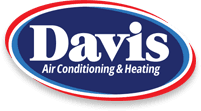The 8 Dirtiest Parts of Your Home and How to Clean Them
Your Houston, Texas, home may look neat and organized, but if you’re not cleaning it carefully on a regular basis, it’s probably teeming with bacteria, dust mites, and other hazards. If you’re experiencing persistent allergies or symptoms of poor indoor air quality like frequent headaches, these unseen hazards may be to blame. Some of the dirtiest parts of your home are the ones you might never think about. Take a close look at these spots and adjust your cleaning routines to make them safer.
Switches and Handles
If you pay close attention to the things you touch through the course of the day, you’ll probably notice that door knobs, cabinet handles, and light switches are toward the top of the list. Think about how many things you’d be wiping down each day if you took a disinfecting wipe to every part of the home you touched. While it’s not realistic to clean off every door knob in the house each day, you should make a quick sweep of your home and try to clean these surfaces off once a week.
If covering the entire house seems a bit daunting, assign a different room to each day of the week. Wipe down appliance handles, buttons, cabinet knobs, and pantry door handles on Mondays, tackle toilet handles and bathroom door knobs on Tuesday, do the light switches and doors in the living room on Wednesdays, and so on. You can clean the entire house over the course of the week by tackling just a few items each day.
Your Kitchen Sink
The items in and around your kitchen sink are some of the dirtiest in the home. Your kitchen sponges top the list, offering a damp environment for bacteria to breed. You can keep your sponges clean by running them through the dishwasher with the rest of your dishes or putting them in the microwave while wet for about two minutes.
The sink itself also harbors a lot of unseen bacteria from products like uncooked meats. If you’re simply rinsing out the sink with water, you’re not really getting it clean. You should clean your sink at least once a day. Use a disinfecting cleanser for a stainless steel sink or diluted bleach on cast iron and ceramic. Don’t forget to clean the faucet and handles as well. Though they’re easy to overlook, these come into contact with your hands more often than the rest of the sink and can spread germs quickly.
The Washing Machine
If you ever fall into the habit of forgetting wet laundry in your machine, it can quickly become one of the dirtiest parts of the house. Those damp clothes are fertile ground for germs, mold, and mildew. If your clothes sit in the washer for a few hours or longer, you may very well need to run them through again. Struggling to stay on top of the laundry rotation? Set an alarm on your phone to remind you to make a prompt switch from the washer to the dryer so you’re not allowing anything to breed in those damp fabrics.
It’s also smart to wipe down your washer on a regular basis. Once a week, use a disinfecting wipe on the inside and outside of the machine. You should also wipe down the areas where you fold your laundry so you’re keeping everything clean. If your laundry hamper has a fabric lining, toss this in with the rest of your clothes weekly so you don’t let a buildup of dirt, dust, and other potential allergens accumulate. This is particularly important if you keep your hamper in the bedroom where you want to maintain good indoor air quality for easy breathing.
Electronics
In a public office, the telephone can harbor over 25,100 germs per square inch, while the keyboard has nearly 3,300, and the computer mouse is home to over 1,600. Although your home office is probably a little cleaner, public items like a family computer are still prime ground for bacteria and germs. Consider the fact that the average toilet seat has just 49 germs per square inch, and you’ll really see the magnitude of the problem.
Clean off any electronics that you have contact with on a weekly basis. This includes your remote controls, smartphones, tablets, and computers. Make sure you’re using wipes that are safe for electronics so you don’t accidently damage your equipment. Don’t forget unseen spots either, such as the cracks and crevices of your keyboard. This area can host a lot of troublesome dust that should be kept out of the home as much as possible.
Air Filters
Air filters are specifically created to stop dust mites, mold spores, and other allergens from circulating throughout the home. If they’re doing their job, they’re probably filthy. Make sure you’re giving your hardworking filters the care and attention they need to manage indoor air quality efficiently. You should change your HVAC filter once every one to three months. Opt for more frequent changes if you have pets in the home or family members who suffer from allergies.
Don’t forget to change other filters around your house as well, such as the filters in your humidifier, air purifier, and vacuum. These essential features can’t do their job if they’re not taken care of properly.
Carpeting and Rugs
The deeper your carpets and rugs, the more they can hide. If you have allergy sufferers in your home, hard floors are the best option for keeping things clean. If you do have carpeting or plush rugs to deal with, make sure you’re cleaning them regularly. You probably think of E. coli and salmonella as threats that are primarily confined to your kitchen surfaces, but they can live anywhere, including your carpeting.
Your rugs can also harbor an alarming buildup of dust mite droppings, which contribute to eczema, perennial allergic rhinitis, and asthma. The risks associated with these culprits are increased if you eat while sitting on the floor, or lay on the floor at any time. You can battle these hazards by steam cleaning your carpets every six to 12 months. Also, have visitors take their shoes off at the door to keep hazards out as much as possible in the first place.
Bedding
You may think of your bed as a safe haven from the worries of the world, but your bedding can be one of the dirtiest parts of your home. Your sheets can house E. coli, salmonella, and feces. Microbes continuously build up over time, so the longer your sheets go unwashed, the more serious the problem will be. Your pillows and mattress can also harbor allergens like dust mites.
You can keep allergens out of your pillows and mattresses by zipping them up in allergy-proof covers. Get rid of the dirty hazards in your sheets by washing them at least once a week. Use hot water to kill dust mites and bacteria. Your dryer isn’t hot enough to do the job, so make sure your washer is on the right setting to keep your bedding really clean.
Towels
Your towels are perpetually damp, creating another one of those welcoming environments for bacteria. Kitchen towels can harbor additional hazards when they’re used to wipe up food spills. Bathroom towels slough off unseen skin cells or dander when used on your skin and hair. Keep your towels clean by washing them in hot water. Towels that get only occasional use can manage with a weekly wash. Wash your kitchen towels twice a week. If your towels get completely soaked or are used for a major spill, wash them immediately.
Don’t just toss damp towels in your hamper for a weekly washing. Actually put them in the machine and start the cycle as soon as you take them out of use. A damp towel in your hamper can spread bacteria to clothing and other items in the laundry pile.
If you’re concerned that dirty ducts or a poorly maintained HVAC system are contributing to the hazards of poor indoor air quality and overall cleanliness if your home, contact Davis Air Conditioning & Heating at 888-710-5530. We can help you get your home clean and healthy.
Image provided by Shutterstock
You May Also Like

Should I Repair or Replace My Furnace in Houston, TX?
The mercury’s dropped, your furnace is making strange sounds, and you’re wondering whether to nurse it back to health or send it… Continue Reading Should I Repair or Replace My Furnace in Houston, TX?…

How Mechanical Ventilation Boosts Indoor Air Quality
The air inside your Sugarland, TX, home changes drastically during the holiday season. As temperatures dip and windows stay sealed tight, indoor… Continue Reading How Mechanical Ventilation Boosts Indoor Air Quality…

Why Are Heat Pumps With Greenspeed Intelligence So Efficient?
As Angleton, TX, homeowners crank up their heating systems for cooler weather, energy bills threaten to climb faster than Gulf Coast humidity… Continue Reading Why Are Heat Pumps With Greenspeed Intelligence So Efficient?…
